5th class have been learning all about how energy can be transferred from one object or medium to another. We were particularly interested in radiation – energy that is transferred from the sun in waves. After taking part in a Department of the Environment course, we wanted to find out more about how effective the sun is as a renewable source of energy. As the world we live in continues to grow and change, we think it’s important to use natural resources as a source of energy. Caring for the environment is hugely important and very topical at the moment, given the worldwide school strikes for climate change that are happening. Creating and using renewable sources of energy will help to significantly reduce air pollution for us and future generations.
We carried out an information gathering session to determine what we already knew about radiation. The most common answers were that it has something to with heat and can be dangerous if we are exposed to too much of it. We learned that radiation is the transfer of energy through waves, including rays from the sun. Then we needed to consider how radiation could be used as a renewable source of energy.
We discussed how some buildings are now equipped with solar panels in order to use renewable energy from the sun as a heat source. Could we also use solar energy to heat and cook food perhaps? We decided to carry out an investigation to see if solar ovens are effective in melting chocolate. If they can melt chocolate, they can cook food too! We needed to design and make our very own ovens to see if this was the case. We thought about what materials we might need, and suggestions included a box, foil to reflect the suns rays, scissors, and chocolate to see if the oven worked!
We considered why cellophane might be useful and agreed that black paper might help in attracting the suns rays too.
How would the oven work if we managed to make it? Well, quite simply, heat from the sun would get trapped inside the oven (box) and it would start to get very hot. Tin foil would reflect sun rays into the box (oven) and rays would then pass through the cellophane and heat up the air that is trapped inside. Placing a piece of black paper at the bottom of the oven would also help to absorb heat.
We recorded all of our predictions on a record sheet and considered which size oven would be most effective at melting the chocolate fastest. Some people predicted the large oven because it could trap more heat and others predicted the small oven because perhaps it wouldn’t take as long to heat up. We even had some predictions for the medium oven for those still undecided!
We knew that we needed to ensure that we were carrying out a ‘fair test’. We did this by creating the exact same solar ovens, using the same resources, milk chocolate and angles at which we placed the oven lids so that they could absorb the suns rays outside (90 degrees). The only thing we changed was the size of the ovens – we used different sized pizza boxes (small, medium and large) and worked in 3 different groups to carry out the investigation.
Check out some photos below of the resources we used and the design and make element of our investigation:
We placed the ovens outside and waited for the radiation from the sun to get to work! Unfortunately the first day we tried to melt the chocolate in the solar ovens the sun disappeared so we waited for a warmer day, with lots more sunshine.
Finally a sunny day! We placed our ovens outside and made sure to check on the chocolate regularly to see if it was melting. We timed how long the boxes sat outside in the sun light and also recorded the temperature outside. The temperature was 14 degrees Celsius and we left the ovens outside in the sun for 3 hours and 50 minutes before any melting occurred.
We then recorded our results and findings. We found that the chocolate contained in the large solar oven melted the most and the fastest. We concluded that this was the case because it contained more tin foil to reflect the sun’s rays into the oven and also contained more black paper – which absorbed the heat better too. We found that the medium sized oven failed to melt any chocolate and that the small oven melted the chocolate a little bit. Perhaps the fact that the small oven didn’t take as long to heat contributed to this. We’re unsure about the medium sized oven and would like to try again to see if we get the same result.
We think that solar ovens, powered by radiation, definitely have the potential to be used for cooking all over the world and the good news is, they are very simple in their design. We think that they could be especially useful in countries that have hot climates, for instance those near the equator, as the suns rays are very strong in these places and would cook food much faster than in climates such as ours.
Curriculum links: Energy and forces; Heat, Materials; Materials and change and Environmental awareness and care; Science and the environment.

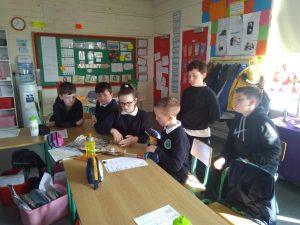
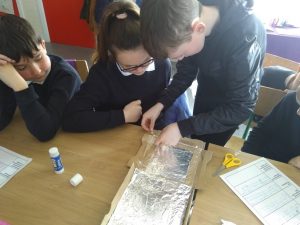
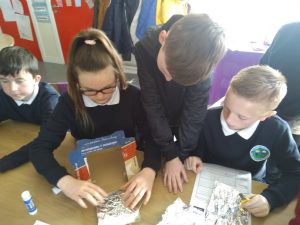
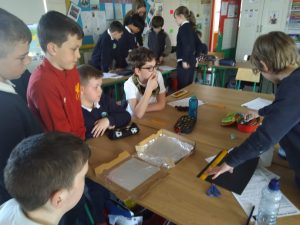
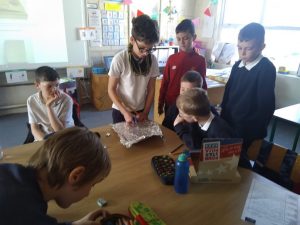
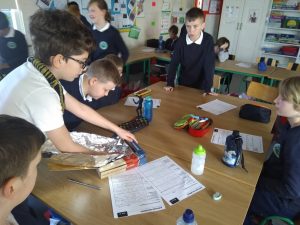
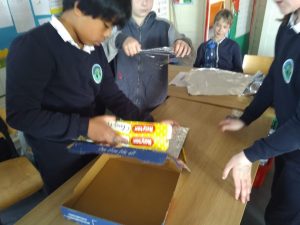
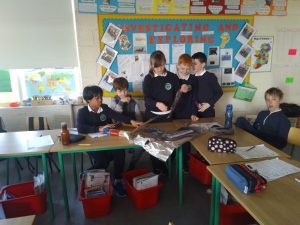
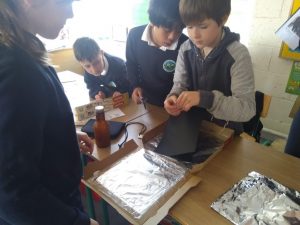
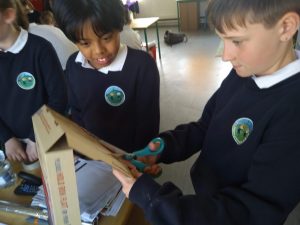
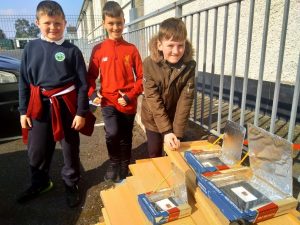
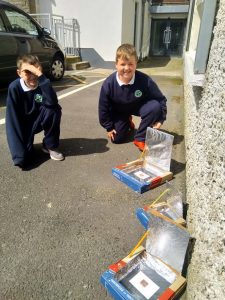
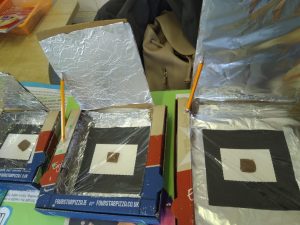



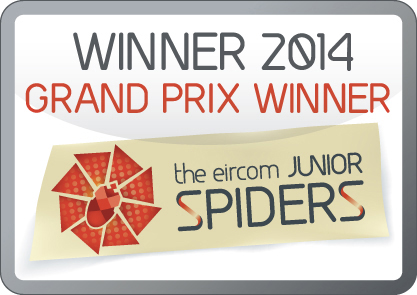



1:08 pm on May 10th, 2019
Well done. What a fantastic project to do with the class!
Basic solar ovens are indeed being used in countries with warmer climates. We once cooked a whole meal consisting of a pot of spinach, another pot of potatoes and some roasted meat in one of these ovens in Namibia. It is of course a slow-cook method but in remote rural areas this is definitively a smart way of preparing food.
I can’t wait to see the results when you repeat your experiment with the ovens on a warmer day. Best of luck!
9:05 am on May 28th, 2019
Fantastic experiment! You guys have worked very hard this year,well done!!!